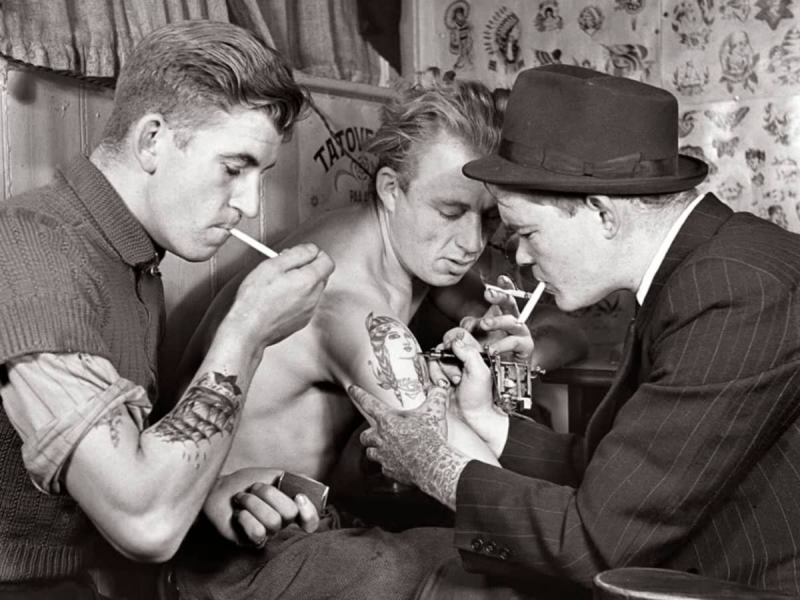Contents
An Inspirational Anatomy Guide: The Arm
Each body part is a unique canvas with its own peculiarities when it comes to inking.
With so many different approaches, it’s easy to feel overwhelmed by the possibilities when considering a new tattoo.
This guide is part of a series intended to help you better visualize what can be achieved with tattooing in each body part.
We’ll begin with the arm and all its specific regions, as well as the combinations between them, which can build up to full-blown sleeves.
If you’re considering getting your arm tattooed, take your time to explore this guide and power your inspirations with a fresh look into the many awesome possibilities this body part has to offer when it comes to inking.

By Mor Asaraf
The Upper Arm
The Biceps / Outer Upper Arm
The biceps area, located on the outer upper arm, is one of the most famous and traditional canvases for tattooing.
Tattoos in this region often revolve around depictions of strength and power. However, it is an area that welcomes several different design approaches, including tribal patterns and delicate portrait pieces.
Whether you choose to highlight the natural lines of the biceps or incorporate symbolic elements, the outer upper arm serves as a prime location for a tattoo that is both visually impactful and anatomically harmonious.

By Patryk Chybowski

By Davide DW

By Daho
The Triceps / Back Upper Arm
The triceps, situated on the back of the upper arm, offers a unique and expansive area for creative tattoo expression.
This region provides a broad canvas that allows for versatile design options, catering to both intricate details and larger, bolder motifs.
The back upper arm’s surface is characterized by its smooth, flat expanse, providing an excellent backdrop for tattoos that can flow seamlessly across the arm.
Popular choices for this area include geometric patterns, abstract designs, or illustrative pieces that take advantage of the triceps’ naturally elongated shape.
Since it’s located on the back of the upper arm, tattoos inked in this region are away from the direct view of its owner. Because of this, this area is particularly good for intricate ideas that will not be continuously in sight.

By Kozo

By Strike Lee

By Ninostitches
Inner Part of The Upper Arm
The inner part of the upper arm, nestled close to the armpits, presents an intimate space for tattoos.
This area offers a more discreet canvas, visible primarily when the arm is raised, providing an element of mystery to the inked design.
It allows for smaller, delicate tattoos, making it an ideal spot for intricate details or minimalist designs that hold personal significance.
Due to the proximity to the armpit, this area is sensitive, requiring careful consideration of pain tolerance during the tattooing process.
Popular choices for the inner upper arm include floral arrangements, small symbols, or quotes that hold personal meaning.
This discreet yet meaningful location allows individuals to showcase their ink in a subtler manner, adding a touch of elegance and hidden significance to their body art.

By Okan Uçkun

By Moritz Müller
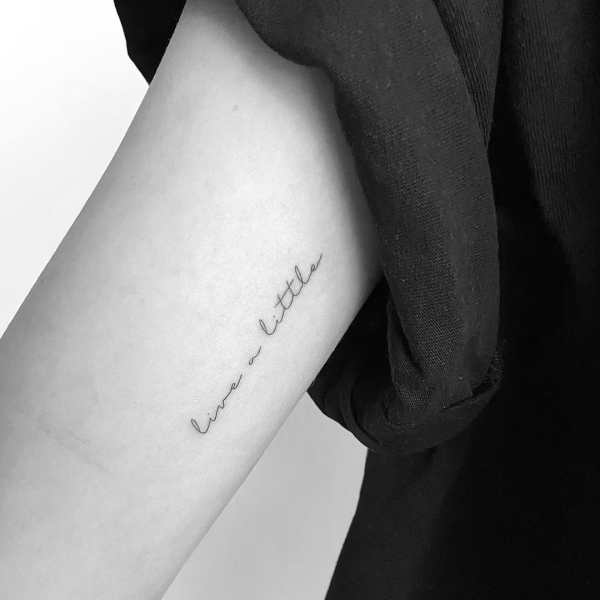
By Mrs. Tattoo
Upper Half Sleeves
Encompassing the area from the shoulder to the elbow, upper half sleeves allow for a cohesive design that can seamlessly integrate with the natural contours of the arm.
Whether opting for a themed composition, such as nature-inspired scenes or intricate tribal patterns, or a collection of standalone elements, upper arm half sleeves offer ample space for detailed and dynamic artwork.
This tattoo style provides a balanced blend of coverage and flexibility, allowing wearers to showcase their ink while still maintaining the option to reveal or conceal the design as desired.

By Tan Ngo

By Zzang Ga

By Diao Shane
Connection to Forearm
Tattoos that seamlessly connect the upper arm with the forearm create a visually striking flow of body art.
The transition from the upper arm to the forearm allows for a continuous narrative or theme, offering a dynamic and immersive experience.
Artists often utilize this expansive canvas to craft intricate and interconnected designs, such as intricate sleeves featuring elaborate patterns, celestial scenes, or nature-inspired elements.
The connection between the upper arm and forearm serves as a bridge, ensuring a fluid transition between two distinct areas of the arm.

By Aleksy Marcinow

By Michael Rasetti
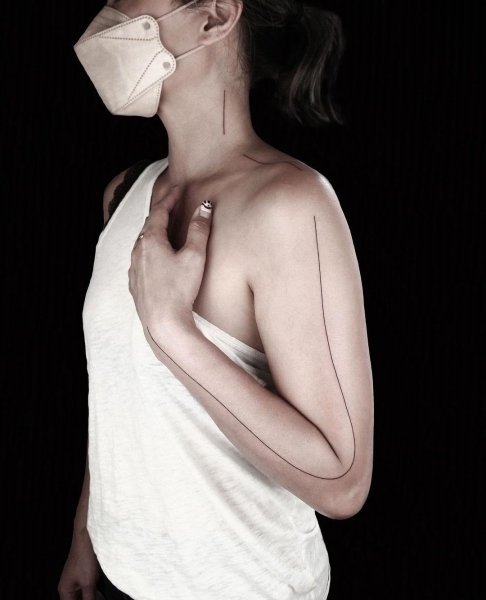
By Okan Uçkun
The Forearm
Outer Forearm
The outer part of the forearm, extending from the elbow to the wrist, offers a dynamic-rich canvas for diverse and eye-catching tattoo designs.
This area provides a flat and expansive surface, making it suitable for various artistic expressions.
It is often chosen for its versatility and visibility, allowing individuals to showcase their ink with ease.
Popular choices for this region include quotes, symbols, or detailed illustrations that can be easily seen and appreciated.
The outer forearm is also ideal for smaller tattoos or minimalist designs, as its visibility ensures that even subtle ink can make a significant statement.

By FEIJ

By Okan Uçkun
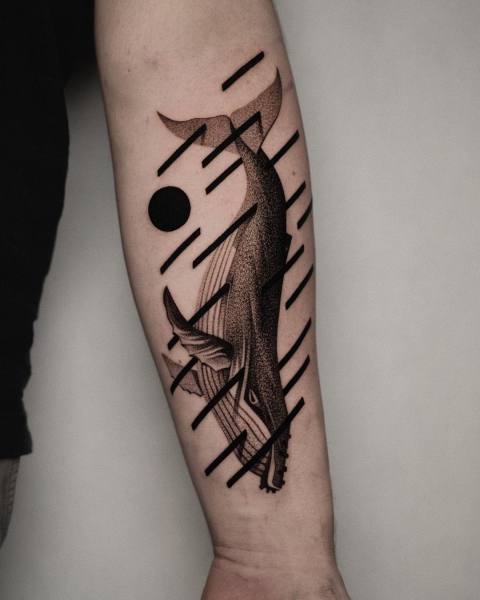
By Patryk Chybowski
Inner Forearm
The inner part of the forearm provides a more intimate and discreet space for tattoos.
This area is often chosen by those who appreciate subtlety or wish to keep their ink more private.
Despite its less exposed nature, the inner forearm is still a versatile canvas for creative expression, as it is a flat elongated surface.
The proximity to the wrist allows for a seamless transition into the hand, creating a cohesive flow of body art.
While the inner forearm may be less visible in everyday situations, it holds a unique charm, revealing its hidden beauty when the arm is in motion.

By Sinsa

By Makar
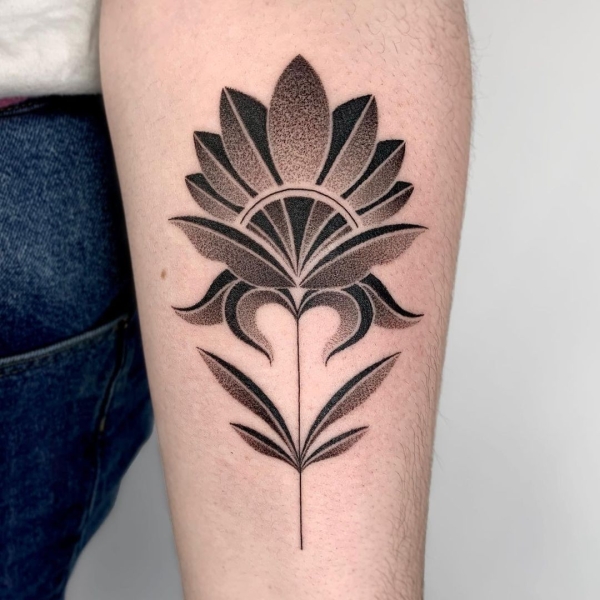
By Velco
Forearm Half Sleeves
Covering the area from the elbow to the wrist, forearm half sleeves allow for a cohesive and impactful design that can be both captivating and easily displayed.
More visually striking than upper arm half sleeves, they are still elegant options to the more aggressive tone of a full sleeve, resembling pieces of jewelry such as armbands that enhance the forearm’s anatomical curves.
Forearm half sleeves serve as a fantastic option for those looking to make a bold statement with their tattoos while maintaining the option for a more subtle presentation when needed.

By Studio Tatatau
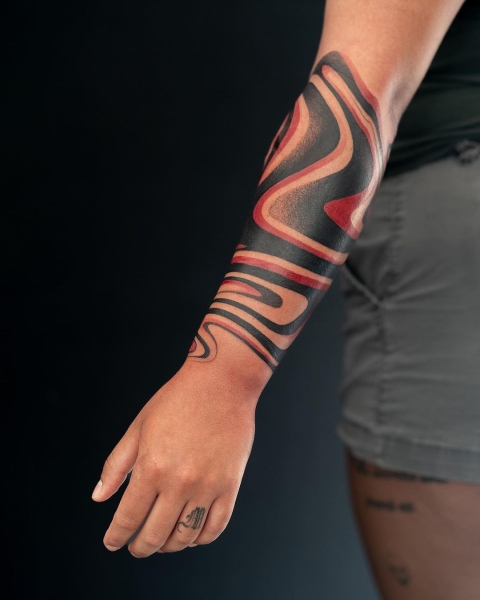
By Katie Mizuno
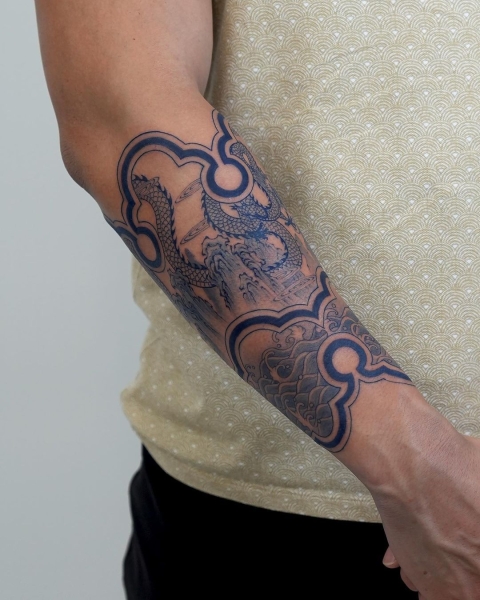
By Saki
The Wrist
Wrist tattoos hold a special allure, providing a delicate yet impactful way to adorn the body with meaningful ink.
The wrist’s small surface area requires thoughtful consideration when selecting a design, making it an ideal spot for symbols, quotes, or minimalist artwork.
This location is favored for its subtlety, allowing individuals to showcase their ink discreetly or flaunt it prominently, depending on their preference.
Due to the sensitivity of the area, the process may be more intense, but the result is often a beautifully refined and elegant piece of body art.

By Sophie Monochrom
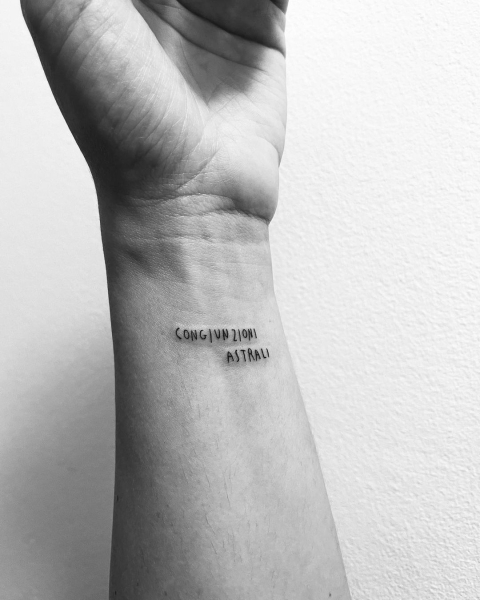
By Ylena Fabiano

By Ariel Bezilla
Wrap-Around / Armbands
Band tattoos, also known as wrap-around tattoos, encircle the anatomy of the arm, creating a continuous and cohesive design that flows seamlessly with the natural contours.
These tattoos often take the form of bands or cuffs encircling the upper arm, forearm, or even the wrist.
This style offers a unique opportunity for artists to craft intricate patterns, geometric designs, or symbolic motifs that gracefully encircle the arm, resembling pieces of jewelry or beautiful ornaments.
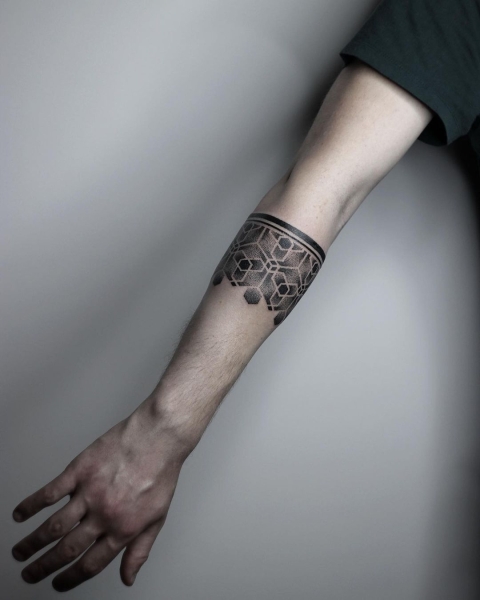
By Pawel Kurylak

By Taena

By Labdhi Pasad
Full Sleeves
Full arm sleeves are a tattoo enthusiast’s ultimate canvas, covering the entire length of the arm from shoulder to wrist.
Artists often use the expansive space to create complex, interconnected designs that can tell a story or showcase a thematic masterpiece.
Full arm sleeves can feature a harmonious blend of various elements, including detailed illustrations, symbolic motifs, or abstract patterns, resulting in stunning compositions.
The seamless integration of the upper arm, elbow, and forearm ensures a fluid transition, turning the entire arm into a dynamic work of art.
Full arm sleeves are usually a sign of commitment and dedication due to their extensive nature, requiring multiple sessions. Still the pay-off is definitely worth it, as they offer a stunning and impactful way for individuals to make a bold personal statement.

By Jessica Kinzer
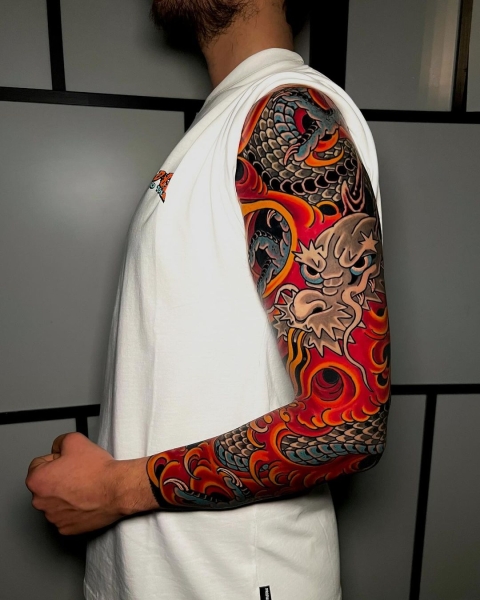
By Michael Rasetti

By Kamil Jedrzejczyk
Use Of Negative Space
Sleeve tattoos that incorporate negative space utilize the empty areas between elements to create a visually stunning and dynamic design.
This style of tattooing takes advantage of the natural contours and movements of the arm, allowing for a more balanced and harmonious composition.
By strategically leaving blank spaces between intricate patterns, symbols, or images, tattoo artists can achieve a captivating contrast that enhances the overall aesthetic appeal of the sleeve.
Negative space not only adds depth and dimension to the tattoo but also allows for more intricate detailing and shading within the design elements themselves.
This technique creates a sense of balance and flow, ensuring that the tattoo remains visually striking while also allowing the skin to breathe and preventing the tattoo from appearing overly cluttered or dense.
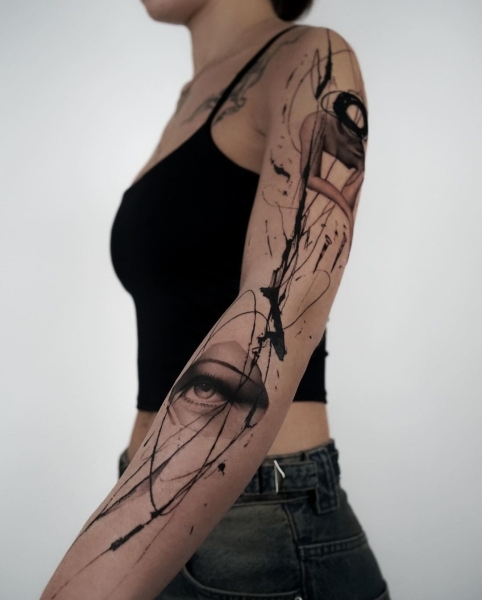
By FOGI

By Deborah Pow
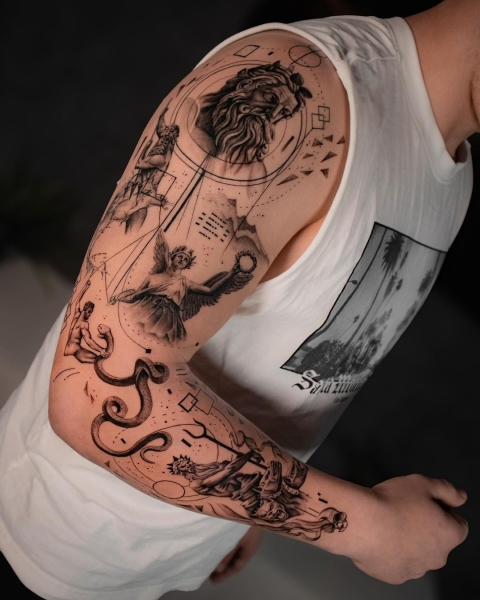
By Ódor Benjámin
The Arm as a Canvas
Arm tattoos offer a vast and versatile canvas for artistic expression, allowing individuals to transform their limbs into personalized works of art.
Whether opting for intricate sleeve designs that span the entire arm or minimalist wrist tattoos that hold deep personal significance, each tattoo choice reflects the wearer’s unique identity and style.
From the biceps to the forearm, every part of the arm presents its own opportunities and challenges for tattoo placement, requiring careful consideration of both anatomical factors and individual preferences.
With an array of styles, themes, and techniques to choose from, arm tattoos serve as a powerful means of self-expression, enabling individuals to showcase their creativity, beliefs, and life experiences through the artistry of ink.
Ultimately, arm tattoos are not merely decorative but serve as meaningful symbols of identity, heritage, and personal journey, making them a timeless and cherished form of body art.
